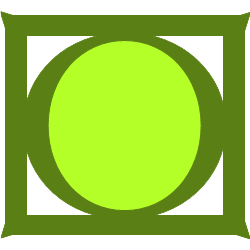

After the short letter proper, it contains a treatise on the topic with references to Regiomontanus's trigonometric book. 29–38) is the first of two letters to Toscanelli. The Greek colophon indicates that Regiomontanus has written it unluckily (δυστυχῶς) in Venice. More complex numbers are written in Latin in the text and indicated in Arabic numerals in the margins. The style of the dialogue is again Platonic and features some geometrical figures. The two speakers agree in the dialogue that one can falsify a squaring method if the proportion of the resulting circumference of the circle and the radius is not between 442/71 and 44/7, a result by Archimedes.

22–28) is another dialogue, in which Aristophilus and Critias discuss the squaring of the circle according to Cusanus, although he is only hinted at in the dialogue (his name is, however, mentioned in the title). However, they are arranged in a rather unfortunate and confusing - and in particular not chronological - order by Schöner. This part is a collection of calculations, a dialogue, letters and treatises written in Venice in June and July 1464 as the colophons indicate. 22), the ἐπιχειρήματα ποικίλα (the Greek words from the title page appear here again) form a comprehensive answer by Regiomontanus. 16–21) entitled De una recti curvique mensura which he had sent to Cardinal Bessarion who apparently passed it on to Regiomontanus. Zinner 1968, 123), followed by another treatise by Cusanus from 1462 (p. 13–15) is a refutation of Cusanus's claims without title (starting with capacitates omnium poligoniarum, probably by Toscanelli, cf. The style of the dialogue is Platonic, in the sense that the contributions of the speakers are rather short and lively. Cusanus had written this dialogue in order to explain Toscanelli his thoughts and had also sent a copy to Regiomontanus's teacher Georg von Peuerbach. 10–12, original Dialogus de circuli quadratura from 1457), in which Nicolaus Cusanus lets his own persona explain his method of squaring the circle to Paulus, a physician from Florence, which can be identified as Cusanus’s friend Toscanelli (cf. An interesting feature is the following dialogue (p. 5–9, original De circuli quadratura from 1450). It begins with an epitome of Cusanus’s prose treatise on squaring the circle (p. The collection is divided in two major parts containing various texts: The first part consists of several texts by Cusanus including his treatise on squaring the circle and probably also one by Paolo dal Pozzo Toscanelli. Schöner then goes on to tell the history of research on the squaring of the circle starting with Anaxagoras and gives an overview of the content of the libellus. In a letter to Georg Tannstetter, Schöner describes how he found a small book ( libellus) in Regiomontanus’s library containing the latter’s refutation of Cusanus’s construction and decided to dedicate its publication to Tannstetter.

This collection has a new title page with a Greek poem by Joachim Camerarius praising Regiomontanus and his teacher Peurbach. It was published after Regiomontanus’s death (1476) by Johannes Schöner as an appendix to De triangulis omnimodis in 1533. Letter, Dialogue, Other (see description)Īs the Greek description by Regiomontanus indicates, this is a diverse (ποικίλα) collection of refutations of Nicolaus Cusanus’s (incorrect) method of squaring the circle. Ioannis de Regiomonte Germani, nationis Franciae, mathematicarum disciplinarum principis, De quadratura circuli dialogus et rationes diversae seperatim aliquot libellis exquisitae ad ea de re Cardinalis Cusani tradita et inventa, quibus auctor haec praescripsit verba Graeca, quae, ne quid illius subtrahemus studiosis, subici curavimus: ἐπιχειρήματα ποικίλα πρὸς τοὺς τοῦ κύκλου τετραγωνισμοὺς Νικόλεω τοὺ Κουσαίου ἐκδεδομένους Regiomontanus, Johannes, Nikolaus, von Kues, Kardinal


 0 kommentar(er)
0 kommentar(er)
